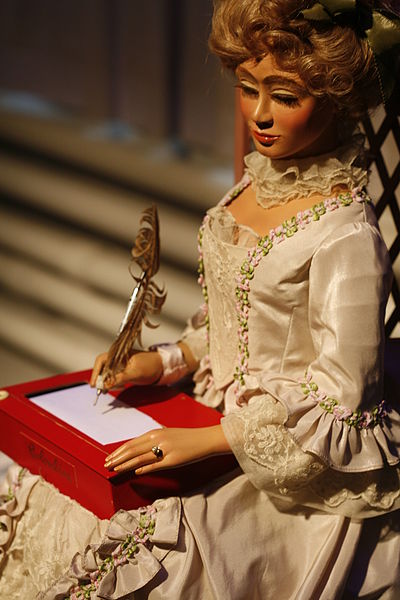In Greek mythology, Talos, also spelled Talus or Talon, was a giant automaton made of bronze to protect Europa in Crete from pirates and invaders. He circled the island's shores three times daily.
Winged "ΤΑΛΩΝ" armed with a stone. Obverse of silver didrachma from Phaistos, Crete (c. 300/280–270 BC). (Cabinet des Médailles, Paris)
The death of Talos depicted on a 5th century BC krater now in the Jatta National Archaeological Museum in Ruvo di Puglia
Talos, a sculpture by Michael Ayrton in Cambridge, England
An automaton is a relatively self-operating machine, or control mechanism designed to automatically follow a sequence of operations, or respond to predetermined instructions. Some automata, such as bellstrikers in mechanical clocks, are designed to give the illusion to the casual observer that they are operating under their own power or will, like a mechanical robot. The term has long been commonly associated with automated puppets that resemble moving humans or animals, built to impress and/or to entertain people.
The book About automata by Hero of Alexandria (1589 edition)
The Antikythera mechanism from 150 to 100 BC was designed to calculate the positions of astronomical objects.
Automaton in the Swiss Museum CIMA
First Strasbourg clock rooster, worked from 1352 to 1789.







